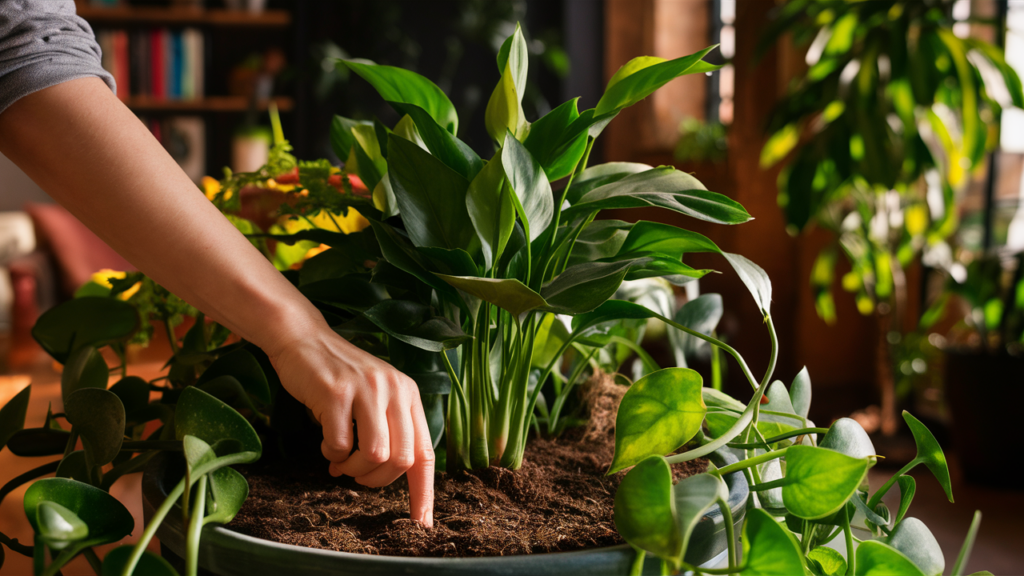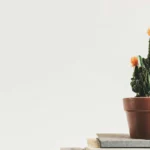Hey there, plant parents! We all love the vibrant life our houseplants bring to our homes, but sometimes, those verdant havens can attract uninvited guests—the dreaded gnat. These pesky houseplant pests can quickly turn your beloved greenery into a breeding ground for frustration. But fear not! This guide will arm you with the knowledge and tactics to get rid of gnats in houseplants and keep them out for good.
Here’s what we’ll cover:
Let’s delve into the fascinating world of gnats and learn how to reclaim your houseplants from these pesky invaders.
Understanding the Enemy: Types of Gnats & Their Habits
First things first, let’s get acquainted with our adversary. While the term “gnat” is often used broadly, there are a few specific types that commonly plague houseplants.
Fungus Gnats: The Most Common Culprit
These tiny black flies, often mistaken for fruit flies, are the most prevalent houseplant pests. They’re attracted to the moist, decaying organic matter in your potting mix. Fungus gnats lay their eggs in the soil, and the larvae, which resemble tiny white worms, feast on the decaying matter, contributing to a vicious cycle of gnats.
Shore Flies: The Larger, More Robust Invader
Shore flies are slightly larger than fungus gnats, with a more robust build. They prefer damp environments and can be found flitting around your plants, especially near the soil line. While they can be annoying, they generally don’t cause significant damage to your plants.
Sciarid Flies: The Stealthy and Persistent Threat
Sciarid flies are a bit more elusive than fungus gnats, and their larvae are a serious threat to delicate plant roots. They are known for their ability to burrow deep into the soil, damaging young roots and potentially stunting plant growth.
Identifying the culprit
To determine the specific type of gnat you’re dealing with, take a close look at their size, shape, and activity.
Fun Fact: Fungus gnats are known for their “leaping” flight pattern, often taking a sudden jump when disturbed.
The next step is to understand what attracts these pesky insects to your houseplants. We’ll explore this in the following section.
Prevention is Key: Creating an Unwelcoming Environment
Think of your houseplants like a tiny ecosystem – they need the right conditions to thrive, and those conditions can also attract pesky gnats. So, the first step to a gnat-free garden is to make your plants less appealing to these little critters. Here’s how:
1. The Power of the Right Potting Mix:
Gnats love moist soil. That’s why it’s crucial to use a well-draining potting mix. A mix that’s too dense and retains moisture can become a breeding ground for these critters. If you’re using a pre-mixed potting mix, be sure to add some extra perlite or vermiculite to increase drainage. You can also find specialized mixes designed specifically for houseplants.
2. Water Wisely:
Overwatering is one of the biggest culprits when it comes to gnats. Instead of watering on a schedule, check the soil moisture before adding more water. When you do water, be sure to let the excess drain out of the pot and discard any standing water from the saucer. If you’re using a terracotta pot, it’s best to water from the bottom to prevent the soil from becoming overly saturated.
3. Keep it Clean:
Gnats are attracted to decaying organic matter, so it’s important to keep your houseplant environment clean. Clean up any spilled water, fallen leaves, or other debris that could be attracting these pests. You can also wipe down the leaves of your plants with a damp cloth to remove any dust or buildup that might provide a breeding ground.
4. The Importance of Air Circulation:
Gnats thrive in humid environments with poor air circulation. If you’re keeping your plants indoors, be sure to provide them with plenty of fresh air. Open a window or use a fan to create a gentle breeze. This will help to dry out the soil and discourage gnats from breeding.
5. Think Outside the Box (or Pot):
While gnats can be a nuisance indoors, they’re usually attracted by the moist soil of potted plants. If you’re concerned about gnats, consider growing some of your favorite plants outdoors in your garden. You can still enjoy the beauty of your houseplants, but you’ll minimize the risk of gnats invading your home.
By taking these preventive measures, you can create an environment that’s less hospitable to gnats and keep your houseplants healthy and happy.
Want to know more about how to choose the right houseplants for your home? Check out our article on Pet-Friendly Plant Picks: Safe and Easy Houseplants for Homes with Pets.
Natural Remedies: DIY Solutions to Fight Gnats in Houseplants
You’ve found the culprits behind those pesky little flies buzzing around your houseplants – gnats! Don’t despair, you don’t have to resort to harsh chemicals. These natural remedies can banish gnats from your leafy companions without harming your plants or your home.
1. Apple Cider Vinegar Trap: Gnats are drawn to the scent of apple cider vinegar. Simply fill a shallow dish with about an inch of apple cider vinegar and add a drop of dish soap. The soap reduces the surface tension of the vinegar, making it harder for the gnats to escape. Place the dish near your infested plants and watch as the gnats take the bait!
2. Yellow Sticky Traps: Gnats are attracted to yellow, so these traps are a simple and effective way to catch them. You can buy yellow sticky traps at most garden centers, or even make your own by cutting out yellow cardstock and coating it with a sticky substance like petroleum jelly.
3. Neem Oil: This natural insecticide is derived from the neem tree and is effective against a wide variety of insects, including gnats. Learn more about how to get rid of spider mites on houseplants. Neem oil is available online or at garden centers. Dilute it according to the instructions on the label and spray it directly on your plants.
4. Diatomaceous Earth: This fine powder is made from fossilized algae and is a safe and effective insecticide. Simply sprinkle a light layer of diatomaceous earth around the base of your plants, avoiding the leaves and stems. The powder acts like tiny shards of glass, cutting through the gnats’ exoskeletons and dehydrating them.
5. Mosquito Dunks: These small discs are designed to kill mosquito larvae, but they also work well on gnat larvae. Simply drop a dunk into your plant’s water reservoir and it will release a bacteria that kills the larvae.
6. Clean Up the Debris: Gnats love to breed in moist, decaying matter, so removing any fallen leaves, fruit peels, or other organic debris from the soil around your plants can help prevent them from multiplying.
7. Water Less Frequently: Overwatering is a major cause of gnat infestations, so ensure that your plants are well-draining and only water them when the top inch of soil is dry.
8. Use a Perlite Top Layer: Perlite is a lightweight, porous material that helps improve drainage and aeration, making it less hospitable to gnats. It can be found at most garden centers or online. Discover some of the best day for houseplants at Trader Joe’s.
9. The Power of Garlic: Gnats dislike the strong scent of garlic. Place a few cloves of garlic around your plants, or add a few drops of garlic extract to the water you use to water your plants.
10. Companion Plants: Certain plants are known to deter insects, including gnats. Find out more about pet friendly plant picks for homes with pets. Consider adding some mint, rosemary, or lavender to your plant collection for their natural pest-repelling properties.
By following these natural remedies, you can keep your houseplants healthy and free from pesky gnats. Don’t forget to check out these awesome outdoor ideas to bring the beauty of your houseplants outdoors. And if you need to find more plants to add to your collection. Happy gardening!
Gnat-Free Plants: The Ultimate Guide to Eradicating Pesky Houseplant Pests
4. Chemical Warfare: When Harsh Measures Are Needed
Sometimes, natural remedies just don’t cut it. If you’re facing a stubborn gnat infestation, it might be time to bring in the big guns – chemical pesticides. While we generally recommend avoiding harsh chemicals around your plants and pets, sometimes they are a necessary evil to regain control.
Here’s what you need to know about using chemical pesticides:
- Choose wisely: Not all pesticides are created equal. Look for products specifically formulated for houseplants and designed to target fungus gnats. Be sure to read the label carefully and follow all instructions for application.
- Consider your plants: Some plants are more sensitive to chemical treatments than others. If you have delicate or rare plants, it’s best to err on the side of caution and try less invasive methods first.
- Safety first: Always wear gloves and a mask when applying pesticides to protect yourself from harmful fumes. Make sure to work in a well-ventilated area and keep children and pets away from treated plants until the product has dried completely.
- Target the soil: The majority of fungus gnats spend their time in the soil, so focus your application on the soil surface. You can also use a diluted solution of insecticidal soap to wipe down the leaves of your plants, but avoid spraying the soil directly.
- Keep it consistent: Often, one application isn’t enough to eradicate a gnat infestation. It’s important to follow the manufacturer’s instructions regarding re-application to ensure you get rid of the gnats completely.
Remember, chemical pesticides should be used as a last resort. Try natural methods first, and if you do decide to use chemicals, do so cautiously and responsibly. Always consult with a professional if you have any doubts or concerns.
Moving forward, consider how you can prevent future infestations by following the advice outlined in our section on Maintenance is Key: Preventing Future Infestations. By keeping your plants healthy and your soil free of excess moisture, you can create a less welcoming environment for these pesky pests.
Maintenance is Key: Preventing Future Infestations
Once you’ve successfully banished the gnats from your houseplants, the battle isn’t over! Keeping them at bay requires ongoing vigilance and a few smart habits.

- Watering Wisely: Gnats thrive in consistently damp soil. Allow the top inch of soil to dry out between waterings, especially during the winter months when your plants are dormant.
- Don’t Overwater: It’s tempting to douse your plants in water, but overwatering creates the perfect breeding ground for gnats. Always check your plants before watering by sticking your finger an inch into the soil – if it’s moist, hold off on watering.
- Choose the Right Potting Mix: Gnats are drawn to moist, organic-rich soil. When repotting your plants, opt for a well-draining mix that allows excess water to escape. You can also add a layer of perlite or gravel to the bottom of the pot for improved drainage.
- Clean Up: Fallen leaves, dead flowers, and plant debris can attract gnats. Regularly clean up any fallen plant material and remove any wilted leaves or flowers.
- Inspect New Plants: Always quarantine new plants for a couple of weeks before introducing them to your existing collection. This helps ensure you don’t bring in any unwanted pests.
Remember, a little bit of prevention goes a long way when it comes to gnat infestations. By following these tips, you can enjoy healthy and happy plants without the pesky nuisance of gnats.
Conclusion: Happy Plants, Happy You!
Congratulations! You’ve now armed yourself with the knowledge and tools to tackle pesky houseplant gnats. While they may be a common problem, they don’t have to be a source of frustration. By understanding their habits, implementing preventative measures, and knowing the best ways to eradicate them, you can keep your houseplants thriving and gnat-free.
Now, go forth and cultivate a beautiful, pest-free indoor jungle! And don’t forget to check out our other articles on houseplant care, like The Green Thumb Guide: 5 Ways Houseplants Boost Your Well-Being and Moldy Mayhem: The Truth About Houseplant Soil. These resources can help you keep your plants healthy and happy for years to come.







